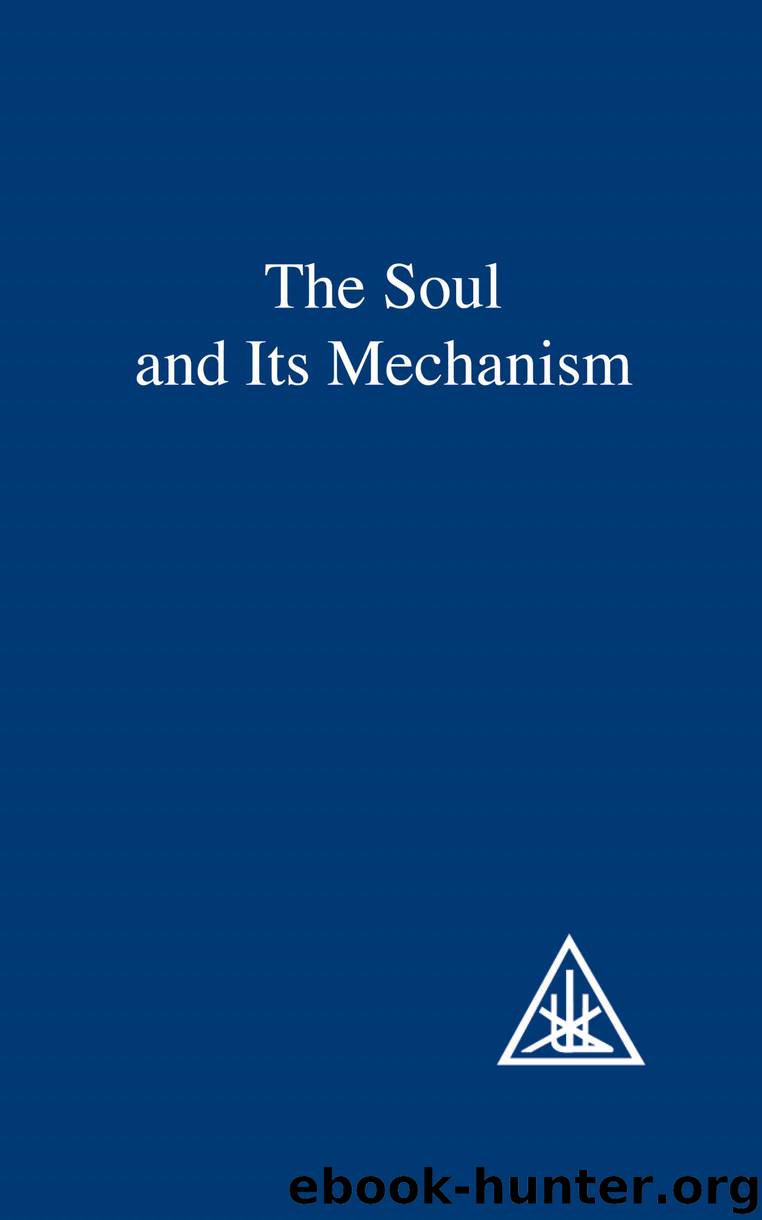The Soul and its Mechanism by Bailey Alice A

Author:Bailey, Alice A. [Bailey, Alice A.]
Language: eng
Format: epub
Publisher: Lucis Publishing Companies
Published: 2013-04-22T16:00:00+00:00
Roger Bacon regarded the centre of the brain as the place where the soul could be found.
Ludovico Vives “regarded the soul as the principle, not only of conscious life, but of life in general; the heart is the centre of its vital or vegetative activity, the brain of its intellectual activity.” (Bernard Hollander, M.D., In Search of the Soul, Vol. I, p. 119)
Mundinus , a famous anatomist of the Middle Ages, believed firmly in “animal spirits.” He taught that these animal spirits passed into the third ventricle by a narrow passage. He also [88] taught that the cellules of the brain are the seat of the intellect.
Vesalius , the first to discern the difference between the grey and white matter of the brain and to describe the five ventricles, “distinguished three souls ... and he assigned to the brain the chief soul, the sum of the animal spirits, whose functions were distinctly mental.” (Bernard Hollander, M.D., In Search of the Soul, Vol. I, p. 186.)
Servetus located the soul in the Aqueduct of Sylvius, the channel connecting the third and fourth ventricle of the brain.
Telesio in De Rerum Natura “taught that the soul was the subtlest form of matter, a very delicate substance, enclosed within the nervous system and therefore eluding our senses. Its seat is chiefly the brain, but it extends also to the spinal cord, the nerves, arteries, veins, and the covering membranes of the internal organs.... Recognizing that the nervous system is in close connection with soul-life, he acknowledged that the soul in man differs only in degree from the soul in animals. He assumed beside the material soul in man, a divine non-corporeal soul directly implanted by God, which united with the material soul.” (Bernard Hollander, M.D., In Search of the Soul, Vol. I, p. 132.)
Willis ascribed the various faculties of the soul, such as mentality, vitality, memory, etc., to different parts of the brain.
Vieussens located the soul in the centrum ovale.
Swedenborg says: “The royal road of the sensations [89] of the body to the soul ... is through the corpora striata.... All determinations of the will also descend by that road.... It is the Mercury of Olympus; it announces to the soul what is happening to the body, and it bears the mandates of the soul to the body.” (Bernard Hollander, M.D., In Search of the Soul, Vol. I, p. 186.)
The corpora striata are a pair of large ganglia of the brain immediately under the anterior and superior region of the brain.
Hollis concluded that “both sensation and movement have their power in the medulla of the brain. This therefore is the seat of the soul,” and
Charles Bonnet said: “The different senses ... with which we are endowed ... have, somewhere, in the brain, secret communications by means of which they may act on one another. The part where the communications take place is that which must be regarded as the seat of the soul.... It is by this part that the soul acts on the body, and by the body on so many different beings.
Download
This site does not store any files on its server. We only index and link to content provided by other sites. Please contact the content providers to delete copyright contents if any and email us, we'll remove relevant links or contents immediately.
| Baha'i | Cults |
| Demonology & Satanism | Eckankar |
| Egyptian Book of the Dead | Freemasonry |
| Messianic Judaism | Mysticism |
| Scientology | Theism |
| Tribal & Ethnic | Unitarian Universalism |
The Four Agreements by Don Miguel Ruiz(5545)
Breaking Free by Rachel Jeffs(3632)
The Hatha Yoga Pradipika (Translated) by Svatmarama(2513)
120 Days of Sodom by Marquis de Sade(2455)
Member of the Family by Dianne Lake(2048)
The Tao of Physics by Fritjof Capra(1865)
The Psychedelic Gospels: The Secret History of Hallucinogens in Christianity by Jerry B. Brown(1831)
The Road to Jonestown by Jeff Guinn(1748)
Uriel's Machine by Christopher Knight(1633)
Going Clear by Lawrence Wright(1584)
Going Clear: Scientology, Hollywood, and the Prison of Belief by Lawrence Wright(1579)
The Grand Grimoire: The Red Dragon by Author Unknown(1422)
The Gnostic Gospel of St. Thomas by Tau Malachi(1418)
Key to the Sacred Pattern: The Untold Story of Rennes-le-Chateau by Henry Lincoln(1356)
The Malloreon: Book 02 - King of the Murgos by David Eddings(1311)
Waco by David Thibodeau & Leon Whiteson & Aviva Layton(1299)
The New World Order Book by Nick Redfern(1261)
The Secret of the Temple by John Michael Greer(1224)
The Initiatory Path in Fairy Tales by Bernard Roger(1182)
